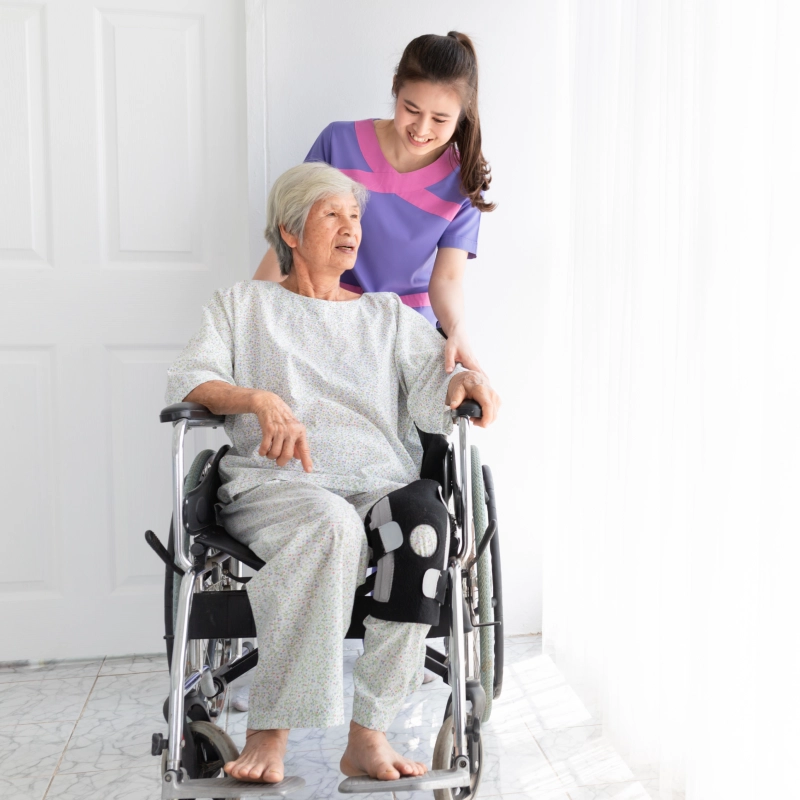
Neurological conditions like stroke, head injury, HIE, spinal cord injury, and Parkinson's disease can significantly impact a person's ability to move and function independently. Rehabilitation plays a vital role in helping individuals regain lost abilities and improve their quality of life. Conventional therapy has been the mainstay of rehabilitation for many years, but recent advancements in robotics have introduced a new approach: Robotic-Assisted Neuro-rehabilitation.
Conventional Therapy
Conventional therapy encompasses a range of therapeutic techniques delivered by qualified healthcare professionals like physiotherapists, occupational therapists, and speech therapists. These techniques focus on improving various aspects of function, including:
- Motor skills: Exercises to improve strength, coordination, and balance.
- Activities of daily living (ADL): Training for tasks like dressing, bathing, and eating.
- Cognitive skills: Activities to enhance memory, attention, and problem-solving.
- Speech and communication: Techniques to improve speech clarity and swallowing function.
- Conventional therapy is a well-established and effective approach. However, it has some limitations:
- Reliance on therapist availability: The effectiveness of therapy can be limited by therapist time and expertise.
- Intensity and consistency: Maintaining high-intensity, repetitive practice can be challenging for both therapists and patients.
- Motivation and engagement: Patients may find traditional therapy exercises repetitive, leading to decreased motivation.
- Physiological pattern of gait/ limb pattern
Robotic-Assisted Neuro-rehabilitation
RAN utilizes robotic devices to supplement or enhance conventional therapy. These robots provide various functions, including:
- Guiding and assisting movement: Robots can guide limbs through movement patterns, promoting proper motor relearning.
- Providing resistance or support: Robots can offer adjustable resistance to strengthen muscles or provide support for balance training.
- Early stage where patient cannot even take a single step, rehab robot helps them to take almost 1000 steps
- Delivering sensory feedback: Some robots can provide visual, auditory, or tactile feedback to enhance motor learning.
- Gamification of therapy: Robots can incorporate game-like elements to make therapy sessions more engaging and motivating.
Advantages of Robotic-Assisted Neuro-rehabilitation over conventional therapy
- Increased intensity and repetition: Robots can deliver therapy with higher intensity and repetition than traditional methods, potentially leading to faster improvement.
- Improved accuracy and precision: Robots can provide more precise and controlled movement assistance compared to manual therapy techniques.
- Objective data collection: Robots can collect real-time data on movement patterns, allowing therapists to track progress more objectively.
- Enhanced motivation and engagement: The interactive nature of robotic therapy can improve patient motivation and adherence to therapy schedules.
Applications of Robotic-Assisted Neuro-rehabilitation
- Stroke: Robots can assist with gait training, upper limb movement therapy, and improving balance and coordination.
- Head Injury
- Spinal cord injury: Robotics can help improve movement in the upper limbs and promote functional independence.
- Parkinson's disease: Robots can aid with gait training, stiffness reduction, and improving dexterity.
- Multiple sclerosis: Robotics can help manage muscle weakness, spasticity, and balance problems.
- Hypoxic ischemic encephalopathy (HIE)
The Future of Neuro-rehabilitation
Robotic Assisted Neuro-rehabilitation is a rapidly evolving field with immense potential to improve patient outcomes in neuro-rehabilitation. However, it is important to remember that robots are not meant to replace therapists. Instead, they are envisioned as valuable tools that can enhance the effectiveness of conventional therapy.
The future of neuro-rehabilitation likely lies in a collaborative approach that combines the expertise of therapists with the precision and tireless assistance of robots. This combined approach has the potential to personalize therapy programs, optimize treatment intensity, and ultimately improve the lives of individuals with neurological conditions.
Conclusion
In the ever-evolving landscape of neuro-rehabilitation, the choice between robotic-assisted therapy and conventional approaches depends on various factors, including the severity of the condition, patient preferences, and available resources. While robotic-assisted neuro-rehabilitation showcases remarkable potential in enhancing outcomes, the value of human touch and personalized care remains a crucial aspect of the rehabilitation journey. Striking a balance between technology-driven innovation and traditional therapeutic approaches may pave the way for a more comprehensive and effective neuro-rehabilitation landscape in the future.

